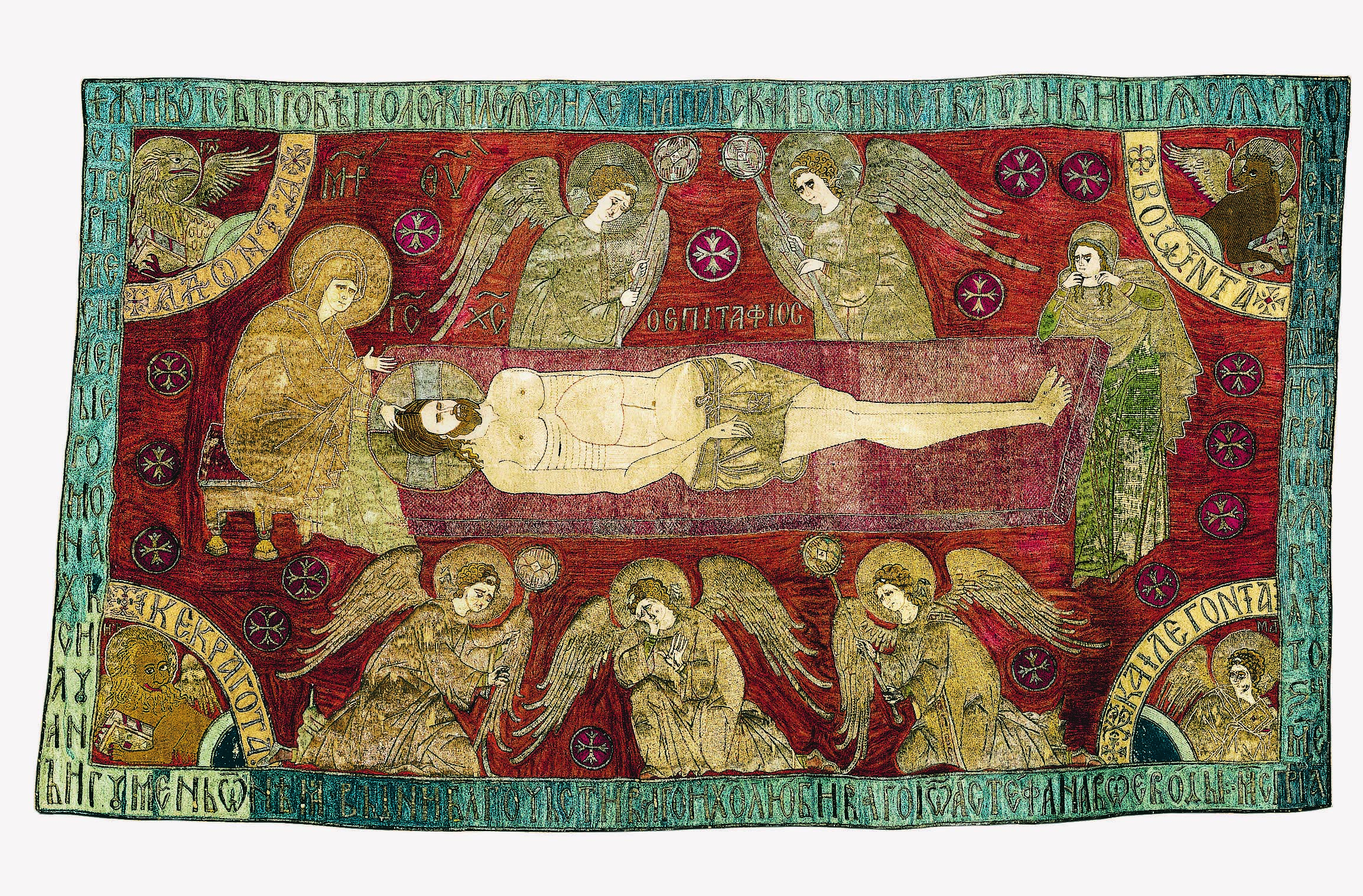According to the inscription that surrounds the embroidery, this epitaphios bears the name of the abbot who donated it to the Neamţ monastery in 1437. Monks executed it in the workshop of the the Neamţ monastery, at that time an important and active cultural and artistic centre. They used the very best materials available: silk cloth, silver and gold threads, pearl beading for the most important contours.
The epitaphios, most often in the form of a large cloth, is basically an icon that depicts the Lamentation of Christ. The body of Jesus is lying on the red stone of Ephesus, surrounded by those who mourn Him: Virgin Mary seated by His head, Mary Magdalene literally tearing off her hair, and five angels. At the corners are the symbolic representations of the four Evangelists: the eagle (John), the ox (Luke), the lion (Mark), and the angel (Matthew). Monks used the cross-in-a-circle motif and the votive inscription that frames the central scene as both symbolic and decorative devices.
In Orthodox churches, the epitaphios is preserved in the altar and used during services on Good Friday and Holy Saturday. It is associated with the Descent from the Cross, the Lamentation and the Deposition.
The lengthy rule of Prince Alexandru I of Moldavia (1400-1432) enabled a number of local workshops to appropriate and develop the imperial Byzantine tradition at a time when Byzantium was under constant threat from the Ottoman Turks. Monks at the Neamț monastery genuinely mastered the craft of embroidery; their use of various needle points enabled them to create such spectacular effects as to render embroidery as suggestive as painting.
See more works in the Romanian Medieval Art Gallery



